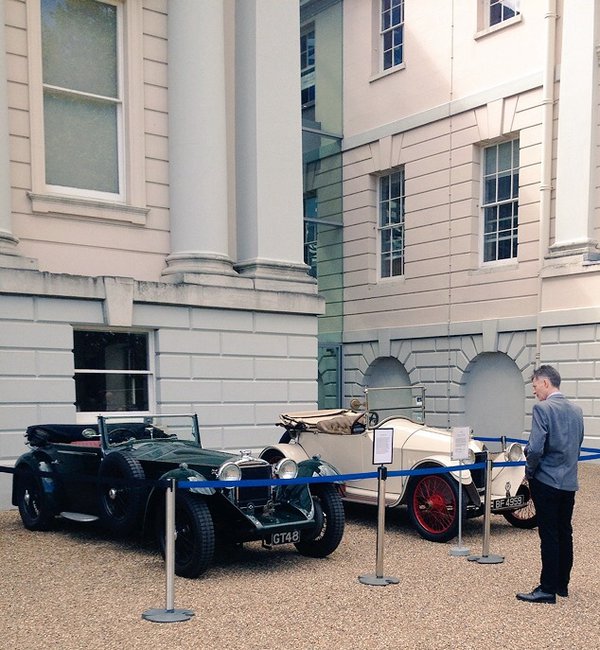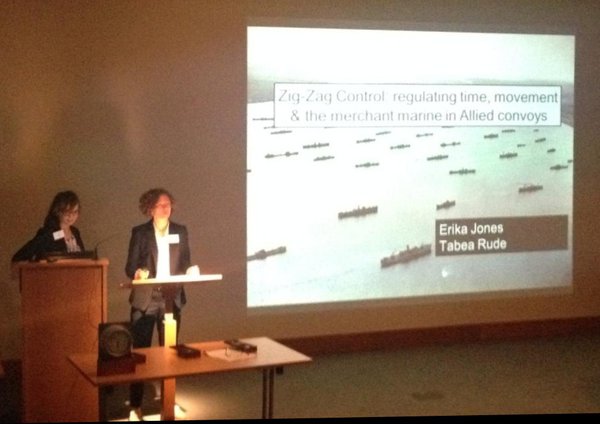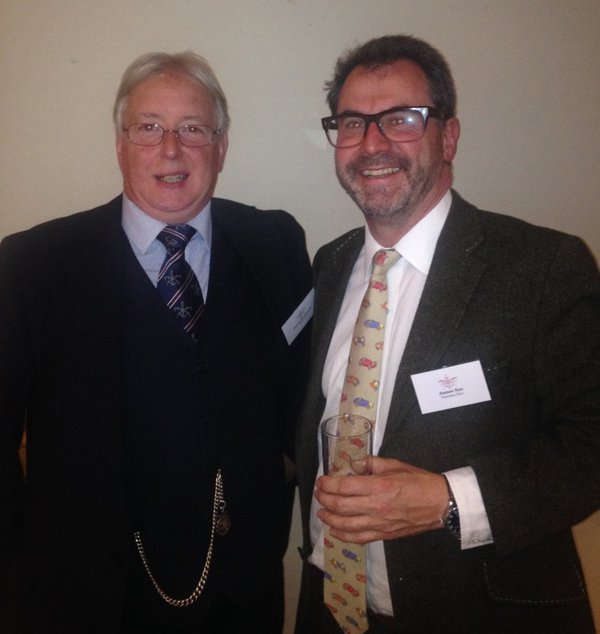The AHS Blog

The AHS 2015 Annual Meeting
This post was written by David Rooney
We welcomed over 100 members and guests to a packed full house at the National Maritime Museum for our 2015 Annual Meeting last Saturday. The sun shone, the atmosphere was buzzing, and we were given a superb day of talks and conversation.
The theme this year was ‘time and transport’ and, outside the museum, AHS members had brought a stunning selection of vintage cars to help set the scene.

During the morning session, we had fascinating talks by Peter Burt on RGS explorers’ watches; Tabea Rude and Erika Jones on zig-zag control; and Rory McEvoy on a Perregaux advertising campaign (apologies for the poor quality indoor photographs!)

After lunch and the society’s AGM, we heard from our new President, Lisa Jardine, on sea-going clocks; Jonathan Betts on polar expedition chronometers; and James Nye on the history of car clocks.
We were delighted to learn that Professor Jardine has recently been made an Honorary Fellow of the Royal Society.
We also marked the handover of the chairing of the society from David Thompson to James Nye by seeing David awarded a Fellowship of the AHS. Our huge congratulations and thanks to Lisa, David and James.

It was great to see so many members and guests from all around the country, of all ages and with all sorts of interests—represented also in the wonderful variety of speakers and lectures.
Thanks to you all for coming—and we look forward to the coming year with great excitement!
Can bonded solid lubricants preserve the teeth of running clocks?
This post was written by Oliver Cooke
Antiquarian clocks are still in widespread use. However, like any machine, mechanical clocks wear out as they run and, to keep them running, repairs will inevitably be necessary.

The image above shows a three century old longcase clock pinion that is well worn. Such a change in form will hinder the correct running of the clock until, eventually, it may no longer run at all.
Current repair techniques involve replacing the lost material or the whole gear. Either method is likely to result in loss of evidence of the clockmaker’s original work. This information is important as it can help us to assess the authenticity and origins of clocks.
It would therefore be useful to find a way to reduce the wearing of the teeth in the first place.
Liquid lubricants, e.g. oils, are generally not used on the teeth of clock gears as they are typically exposed to the air, from which dust can mix with the oil to form an abrasive, or chemicals can form which can corrode gears.

Bonded solid lubricants (B.S.L.s) are dry and do not absorb contaminants from the air. B.S.L.s contain particles of dry lubricant, such as graphite, suspended in a binding agent, such as epoxy resin.
They are applied as a liquid which cures to form a hard, dry coating. This coating can both lubricate and act as a sacrificial wearing layer. B.S.L.s might therefore be a useful treatment for preserving the gears of clocks.

Over the last year at the British Museum, where we run antiquarian clocks in the gallery, I have been conducting trials of B.S.L.s on model gear teeth as part of an MA Programme in Conservation Studies at West Dean College.
The B.S.L. that was tested was found to reduce wear compared to uncoated gear teeth. However, scientific analysis showed that it contained chemicals that are unsuitable for use on historic parts.
There are however many other types of B.S.L. and, given the promising results, I plan to test more. It is hoped that this will eventually lead to a treatment to help to keep the antiquarian clocks running with their original gears.
Look out for more information in future editions of our journal, Antiquarian Horology.